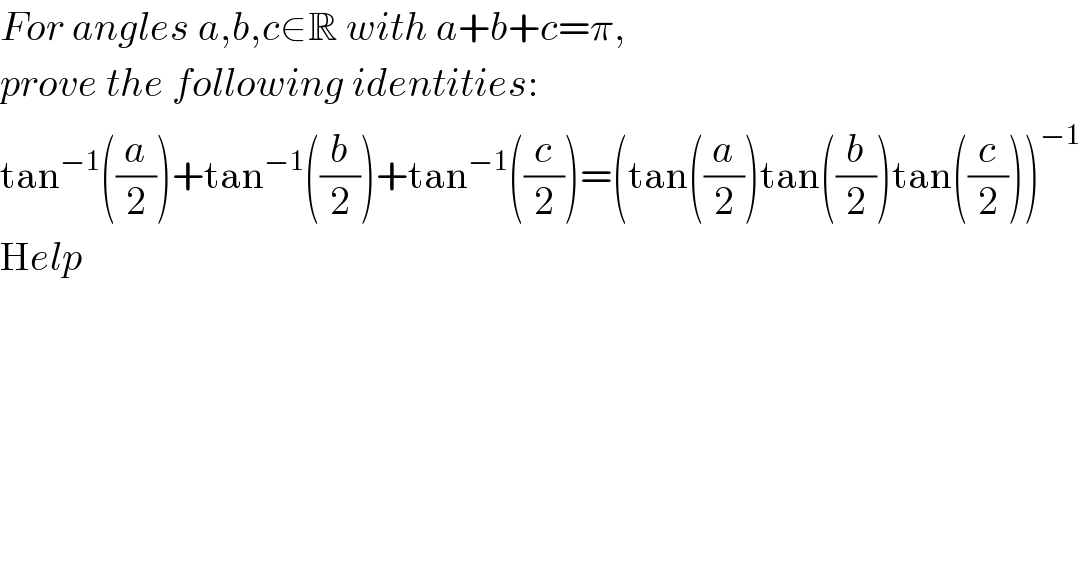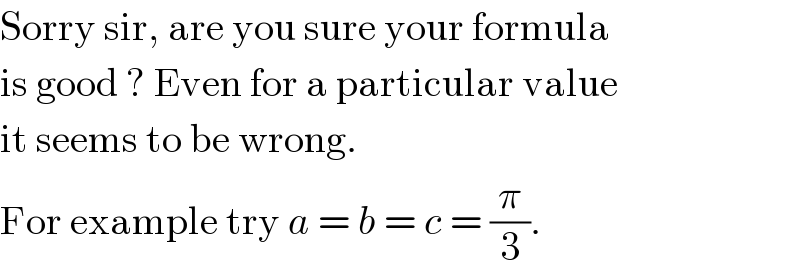
Question Number 115471 by manuel2456 last updated on 26/Sep/20

$${For}\:{angles}\:{a},{b},{c}\in\mathbb{R}\:{with}\:{a}+{b}+{c}=\pi,\: \\ $$$${prove}\:{the}\:{following}\:{identities}: \\ $$$$\mathrm{tan}^{−\mathrm{1}} \left(\frac{{a}}{\mathrm{2}}\right)+\mathrm{tan}^{−\mathrm{1}} \left(\frac{{b}}{\mathrm{2}}\right)+\mathrm{tan}^{−\mathrm{1}} \left(\frac{{c}}{\mathrm{2}}\right)=\left(\mathrm{tan}\left(\frac{{a}}{\mathrm{2}}\right)\mathrm{tan}\left(\frac{{b}}{\mathrm{2}}\right)\mathrm{tan}\left(\frac{{c}}{\mathrm{2}}\right)\right)^{−\mathrm{1}} \\ $$$$\mathrm{H}{elp} \\ $$$$ \\ $$
Commented by Olaf last updated on 27/Sep/20

$$\mathrm{Sorry}\:\mathrm{sir},\:\mathrm{are}\:\mathrm{you}\:\mathrm{sure}\:\mathrm{your}\:\mathrm{formula} \\ $$$$\mathrm{is}\:\mathrm{good}\:?\:\mathrm{Even}\:\mathrm{for}\:\mathrm{a}\:\mathrm{particular}\:\mathrm{value} \\ $$$$\mathrm{it}\:\mathrm{seems}\:\mathrm{to}\:\mathrm{be}\:\mathrm{wrong}. \\ $$$$\mathrm{For}\:\mathrm{example}\:\mathrm{try}\:{a}\:=\:{b}\:=\:{c}\:=\:\frac{\pi}{\mathrm{3}}. \\ $$
